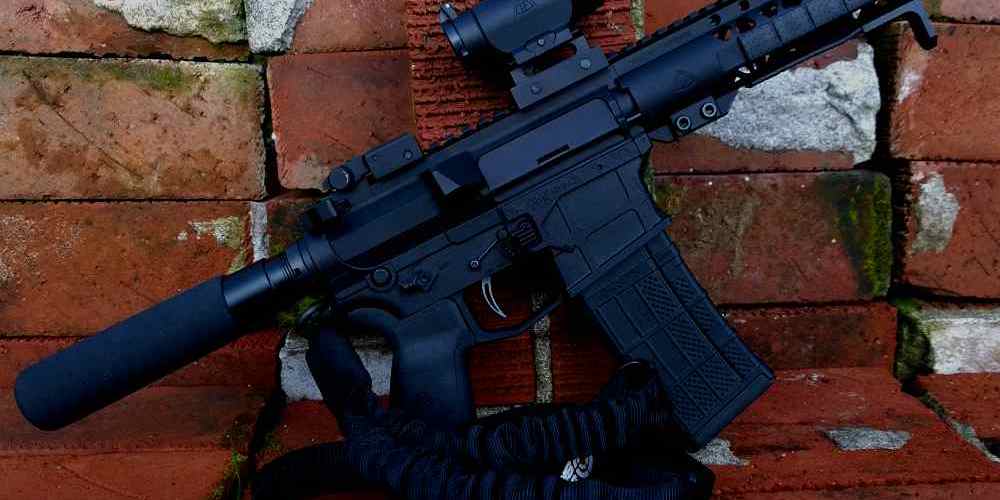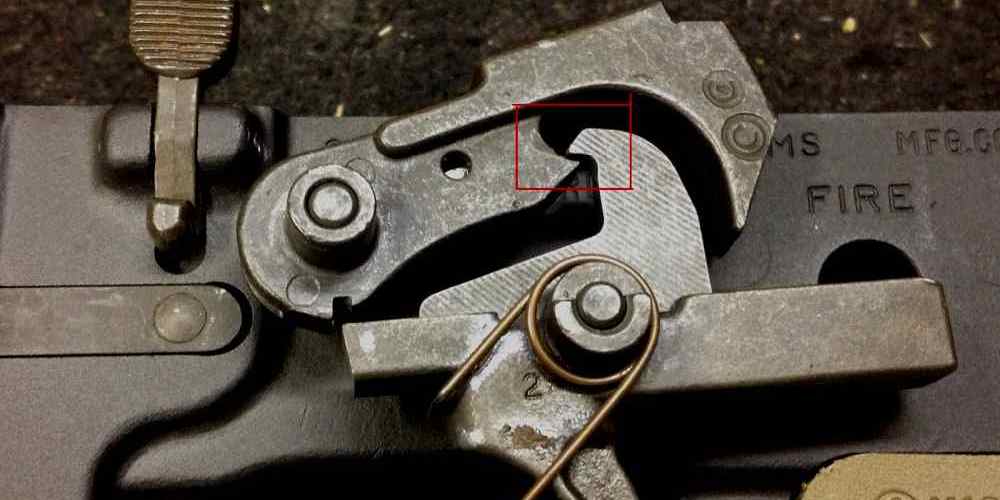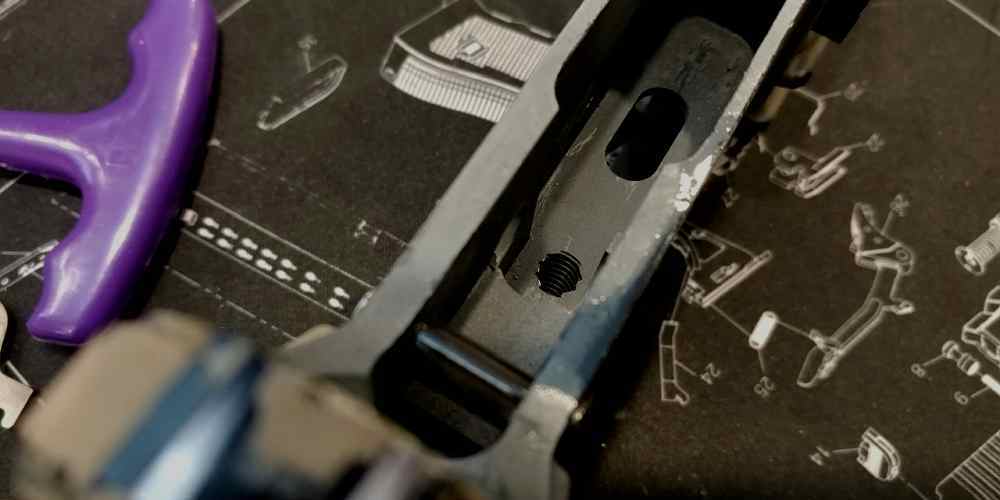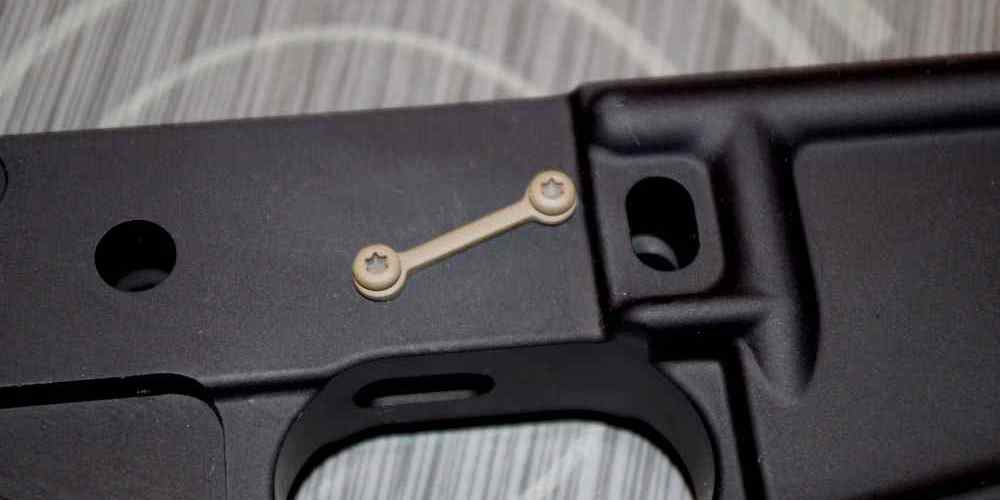“Unlock precision with a deep dive into the AR15 trigger group.”
Types of AR15 Trigger Groups
The AR15 is a popular rifle platform known for its modularity and customization options. One of the key components of an AR15 is the trigger group, which is responsible for firing the rifle. Understanding the anatomy of an AR15 trigger group is essential for anyone looking to build or modify their rifle.
There are several types of AR15 trigger groups available on the market, each with its own unique characteristics and benefits. The most common types of AR15 trigger groups are single-stage, two-stage, and binary triggers.
Single-stage triggers are the simplest type of trigger group and are commonly found in entry-level AR15 rifles. When the trigger is pulled, it releases the hammer, which then strikes the firing pin to ignite the primer and fire the round. Single-stage triggers have a consistent pull weight throughout the entire trigger pull, making them ideal for fast and accurate shooting.
Two-stage triggers, on the other hand, have a two-step trigger pull. The first stage, also known as the take-up stage, has a light pull weight and allows the shooter to take up the slack in the trigger before reaching the second stage. The second stage has a heavier pull weight and is where the trigger breaks, firing the rifle. Two-stage triggers are popular among precision shooters for their ability to provide a consistent and predictable trigger pull.
Binary triggers are a relatively new innovation in the world of AR15 trigger groups. Binary triggers allow the shooter to fire a round both when the trigger is pulled and released, effectively doubling the rate of fire. This can be useful in certain tactical situations where rapid follow-up shots are necessary. However, binary triggers are subject to strict regulations in some states and may not be legal for civilian use in all areas.
Regardless of the type of trigger group you choose, the basic components of an AR15 trigger group are the same. The main components of an AR15 trigger group include the trigger, hammer, disconnector, and springs.
The trigger is the part of the trigger group that the shooter pulls to fire the rifle. The trigger is connected to the hammer by a sear, which holds the hammer in the cocked position until the trigger is pulled. When the trigger is pulled, the sear releases the hammer, allowing it to strike the firing pin.
The hammer is the part of the trigger group that strikes the firing pin to ignite the primer and fire the round. The hammer is held in the cocked position by the sear until the trigger is pulled, at which point the sear releases the hammer.
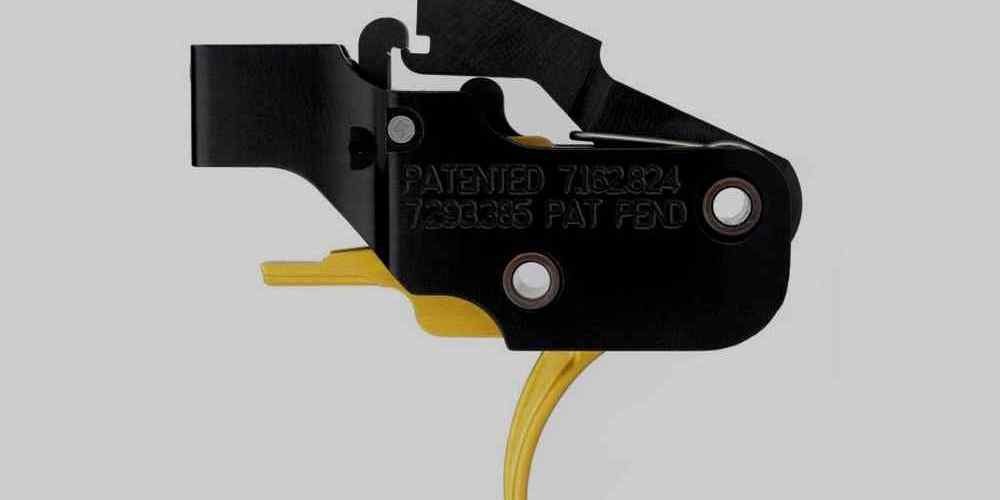
The disconnector is a small piece that prevents the hammer from striking the firing pin until the trigger is released. When the trigger is pulled, the disconnector moves out of the way, allowing the hammer to strike the firing pin. When the trigger is released, the disconnector engages, preventing the hammer from striking the firing pin again until the trigger is pulled.
The springs in an AR15 trigger group are responsible for providing tension and returning the trigger, hammer, and disconnector to their proper positions after each shot. The main springs in an AR15 trigger group are the trigger spring, hammer spring, and disconnector spring.
In conclusion, understanding the anatomy of an AR15 trigger group is essential for anyone looking to build or modify their rifle. Whether you choose a single-stage, two-stage, or binary trigger, knowing how the components of the trigger group work together is key to ensuring your rifle functions properly and reliably. By familiarizing yourself with the different types of trigger groups and their components, you can make an informed decision on which trigger group is best suited for your needs.
Components of an AR15 Trigger Group
The AR15 is a popular rifle known for its versatility and customization options. One of the key components of an AR15 is the trigger group, which plays a crucial role in the rifle’s performance. In this article, we will explore the anatomy of an AR15 trigger group, including its components and how they come together to create a smooth and reliable trigger pull.
The trigger group of an AR15 consists of several key components, including the trigger, hammer, disconnector, and springs. Each of these components plays a specific role in the firing process, working together to ensure that the rifle fires safely and accurately.
The trigger is the part of the trigger group that the shooter pulls to fire the rifle. It is connected to the hammer through a series of pins and springs, allowing it to release the hammer when pulled. The trigger is typically made of steel or aluminum and is designed to withstand repeated use without wearing out.
The hammer is the component of the trigger group that strikes the firing pin, igniting the primer and firing the round. The hammer is held in place by the trigger until it is released, at which point it is propelled forward by the force of the hammer spring. The hammer is typically made of steel and is designed to withstand the impact of repeated firing.
The disconnector is a small piece of metal that prevents the hammer from striking the firing pin until the trigger is released. When the trigger is pulled, the disconnector moves out of the way, allowing the hammer to strike the firing pin. Once the round is fired, the disconnector resets, preventing the hammer from striking the firing pin again until the trigger is pulled.
The springs in the trigger group play a crucial role in ensuring that the trigger functions properly. The hammer spring provides the force needed to propel the hammer forward when the trigger is pulled, while the trigger spring helps to reset the trigger after each shot. These springs are typically made of high-quality steel and are designed to withstand the rigors of repeated use.
Assembling an AR15 trigger group can be a complex process, but with the right tools and knowledge, it can be done easily. To assemble the trigger group, start by inserting the trigger into the lower receiver, making sure that it is properly aligned with the hammer and disconnector. Next, insert the hammer into the lower receiver, ensuring that it is properly aligned with the trigger and disconnector.
Once the trigger and hammer are in place, insert the disconnector and springs, making sure that they are properly seated and aligned. Finally, test the trigger group to ensure that it functions properly, checking for smooth and consistent trigger pulls.
In conclusion, the trigger group of an AR15 is a complex but essential component of the rifle. By understanding the anatomy of the trigger group and how its components work together, shooters can ensure that their AR15 performs reliably and accurately. With proper assembly and maintenance, the trigger group can provide years of reliable service, making it a key component of any AR15 rifle.
Function of Each Component in an AR15 Trigger Group
The AR15 trigger group is a critical component of the rifle that allows the shooter to fire the weapon accurately and safely. Understanding the function of each component in the trigger group is essential for proper assembly and maintenance of the rifle.
The trigger itself is the primary component of the trigger group and is responsible for releasing the hammer to strike the firing pin. When the trigger is pulled, it moves backward, releasing the sear and allowing the hammer to fall. The trigger pull weight can be adjusted to suit the shooter’s preferences, with lighter pulls typically preferred for precision shooting.
The sear is a small piece of metal that holds the hammer in the cocked position until the trigger is pulled. When the trigger is pulled, the sear releases the hammer, allowing it to strike the firing pin. The sear must be properly fitted and adjusted to ensure reliable and consistent operation of the trigger group.
The hammer is the component that strikes the firing pin to ignite the primer and fire the round. The hammer is held in the cocked position by the sear until the trigger is pulled, at which point it is released to strike the firing pin. The hammer must be properly tensioned and fitted to ensure reliable ignition of the round.
The disconnector is a small piece of metal that prevents the hammer from falling when the trigger is released before the bolt is fully closed. The disconnector catches the hammer and holds it in the cocked position until the trigger is released and reset. This prevents accidental discharges and ensures safe operation of the rifle.
The trigger spring is a small spring that provides tension to the trigger, allowing it to return to its forward position after being pulled. The trigger spring must be properly tensioned to ensure a crisp and consistent trigger pull. A weak trigger spring can result in a mushy trigger pull, while a heavy trigger spring can make it difficult to pull the trigger.
The hammer spring is a larger spring that provides tension to the hammer, holding it in the cocked position until the trigger is pulled. The hammer spring must be properly tensioned to ensure reliable ignition of the round. A weak hammer spring can result in light primer strikes, while a heavy hammer spring can make it difficult to cock the hammer.
The trigger pins are small metal pins that hold the trigger group components together and allow them to pivot and move as needed. The trigger pins must be properly installed and secured to ensure the trigger group functions correctly. Loose or improperly installed trigger pins can cause the trigger group to malfunction and potentially result in a dangerous situation.
In conclusion, each component in the AR15 trigger group plays a critical role in the function and operation of the rifle. Understanding the function of each component and how they work together is essential for proper assembly and maintenance of the trigger group. By ensuring that each component is properly fitted, adjusted, and tensioned, shooters can enjoy a reliable and consistent trigger pull that enhances their shooting experience.
How to Assemble an AR15 Trigger Group
The AR15 trigger group is a critical component of the popular rifle, responsible for firing the weapon when the trigger is pulled. Understanding the anatomy of the trigger group and how to properly assemble it is essential for any gun enthusiast or owner of an AR15. In this article, we will break down the components of an AR15 trigger group and provide step-by-step instructions on how to assemble it.
The trigger group of an AR15 consists of several key components, including the trigger, hammer, disconnector, trigger spring, hammer spring, and pins. Each of these parts plays a crucial role in the firing mechanism of the rifle. The trigger is the part that is pulled by the shooter to fire the weapon, while the hammer is the component that strikes the firing pin to ignite the cartridge. The disconnector is responsible for resetting the trigger after each shot, allowing for rapid follow-up shots.
To assemble an AR15 trigger group, you will need to first ensure that all the components are clean and free of any debris or obstructions. Begin by inserting the trigger spring into the trigger, making sure that it is properly seated. Next, insert the trigger into the lower receiver of the rifle, ensuring that it is aligned with the pin holes.
Once the trigger is in place, insert the hammer spring onto the hammer, making sure that it is properly seated. Insert the hammer into the lower receiver, aligning it with the pin holes. Next, insert the disconnector into the lower receiver, ensuring that it is properly aligned with the trigger and hammer.
With all the components in place, it is time to secure them with the pins. Insert the trigger pin through the trigger, trigger spring, and lower receiver, ensuring that it is fully seated. Next, insert the hammer pin through the hammer, hammer spring, and lower receiver, making sure that it is properly aligned.
Once the pins are in place, test the trigger group by pulling the trigger to ensure that it functions properly. If the trigger group is functioning correctly, you can proceed to reassemble the rest of the rifle. If there are any issues with the trigger group, disassemble it and troubleshoot the problem before reassembling.
In conclusion, understanding the anatomy of an AR15 trigger group and how to properly assemble it is essential for any gun owner or enthusiast. By following the step-by-step instructions outlined in this article, you can ensure that your AR15 trigger group is properly assembled and functioning correctly. Remember to always handle firearms with care and follow all safety precautions when assembling or disassembling your rifle.
Common Upgrades and Modifications for AR15 Trigger Groups
The AR15 is a popular rifle platform known for its versatility and customization options. One of the key components of an AR15 is the trigger group, which plays a crucial role in the rifle’s performance. In this article, we will explore the anatomy of an AR15 trigger group, including its components and assembly process.
The trigger group of an AR15 consists of several parts that work together to control the firing mechanism of the rifle. The main components of an AR15 trigger group include the trigger, hammer, disconnector, sear, and springs. Each of these parts plays a specific role in the operation of the trigger group.
The trigger is the part of the trigger group that the shooter pulls to fire the rifle. When the trigger is pulled, it releases the hammer, which strikes the firing pin and ignites the cartridge. The hammer is a metal component that is propelled forward by a spring when the trigger is pulled. The disconnector is a small piece that prevents the hammer from striking the firing pin until the trigger is released.
The sear is a small piece that holds the hammer in place until the trigger is pulled. When the trigger is pulled, the sear releases the hammer, allowing it to strike the firing pin. The springs in the trigger group provide tension and help control the movement of the trigger, hammer, and other components.
Assembling an AR15 trigger group can be a complex process, especially for those who are new to firearms. It is important to follow the manufacturer’s instructions carefully to ensure that the trigger group is assembled correctly. Improper assembly can result in malfunctions or even accidents.
There are several common upgrades and modifications that can be made to an AR15 trigger group to improve its performance. One popular upgrade is the installation of a drop-in trigger kit, which replaces the factory trigger group with a smoother, lighter trigger pull. Drop-in trigger kits are easy to install and can significantly improve the shooting experience.
Another common modification for AR15 trigger groups is the installation of a match-grade trigger. Match-grade triggers are designed to provide a crisp, clean break with minimal creep or overtravel. These triggers are popular among competitive shooters who require precise control over their rifle’s firing mechanism.
Some shooters also choose to install aftermarket springs in their AR15 trigger groups to adjust the trigger pull weight. Lighter springs can reduce the amount of force required to pull the trigger, while heavier springs can increase the trigger pull weight for added safety.
In conclusion, the trigger group is a critical component of an AR15 rifle that plays a key role in its performance. Understanding the anatomy of an AR15 trigger group and how it functions can help shooters make informed decisions about upgrades and modifications. Whether you are looking to improve the trigger pull weight, reduce creep, or enhance overall performance, there are many options available to customize your AR15 trigger group to suit your shooting style.





